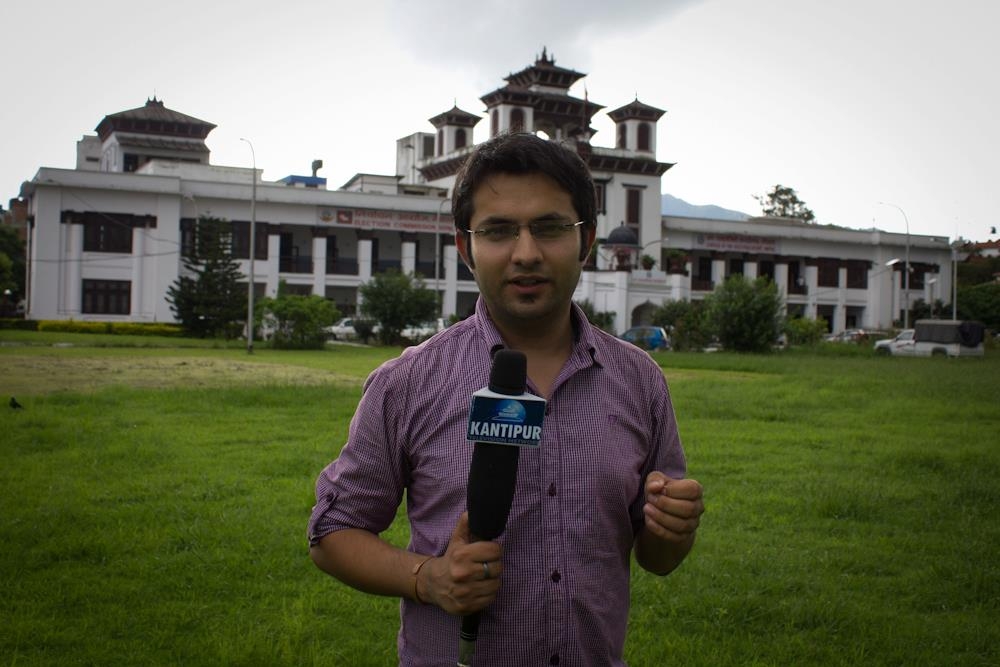Journalists@Work: Rajneesh Bhandari
In the first of our Journalists@Work series, we talked to Rajneesh Bhandari, a multimedia journalist in Kathmandu, Nepal. Rajneesh participated in DW Akademie’s television reporting training held in Kathmandu in 2009 in cooperation with the Television Journalist Association of Nepal (TVJ). Rajneesh, who works at Kantipur Television, gives us some insight into his everyday life as a journalist in Nepal.
What have you been working on recently?
I am very much interested in multimedia storytelling, so I love experimenting with new tools to tell stories in a compelling way. I have just come up with a multimedia iPad book “Living with Autism“. I chose this topic because mainstream media in Nepal has ignored this issue and the government has not taken any action. Nepal doesn’t have a single autism care center for autistic adults.
Can you apply the knowledge that you learned from DW Akademie to your daily work now?
I still remember these words Thomas Rehman taught me during the Reporting on Television training: “Sound ready? Ready! Camera ready? Ready! Roll! Rolling!”
Though I was doing my masters in journalism and working for a reputable television station in Nepal, I lacked in-depth television reporting training on an international level. That was the reason why I joined the training. I belonged to the first batch of television journalists trained by DW Akademie in Kathmandu. As Nepali televisions were flooded with talking heads, I was trying hard to bring social issues to the screen, to create compelling stories. You can see the video produced by my group.
In my group, news producers, camerapersons and visual editors participated to learn about news production, shooting, editing, writing and sound. I was following the traditional format of television. I used to write my script and then edit the visuals. But Thomas asked me to do the opposite, first edit the visual and then write the story. This way looks more engaging. I am still following this procedure now.
Tell us about your typical work day.
It starts in the morning when I check various news sources. Then I plan my day. My office starts work at 10:45 in the morning with a regular meeting every day. That is when I pitch my stories. I report on security, defense, court and anti-corruption agencies, as well as social stories. As I am covering key beats, there are many important and interesting events. I have to keep my eyes open to the developments, calling the spokespersons and sources regularly. Normally a day ends up with two to three stories, most of the time with news packages.
After coming back from the field, I edit the visual, write the script and give the voiceover. We use VSN news server in our office and Sony Vegas to edit audio and visual. We have news broadcasts every hour so accuracy and speed matter a lot.
After completing my office work, I gear up for other assignments at thinkbrigade.com, where I’m the Multimedia Team Leader. I proof articles from the multimedia perspective with my team, checking if the links are working fine, if the caption is right, if the picture has a good resolution and other multimedia elements.
I get home by around 8 or 9 pm. Then have something to eat and work on the other projects and assignments that I am involved in.
What sort of challenges do you face working as a journalist in Nepal in general?
There are a number of challenges. Society perceives journalists here negatively. We as journalists are truth tellers, we write things because we care about society. Journalists should also be professional in Nepal and not write in favor of certain political parties or groups. Verification, accuracy and fairness should be the fundamentals.
Nepal’s media lacks a good strategy. There is still no social media guideline. Talking heads are still ruling the television screen. We need a good digital strategy, innovative applications to produce good multimedia stories for our readers, viewers and listeners. We need to use the latest technology to tell our stories in a compelling way.
Interview by Juan Ju




